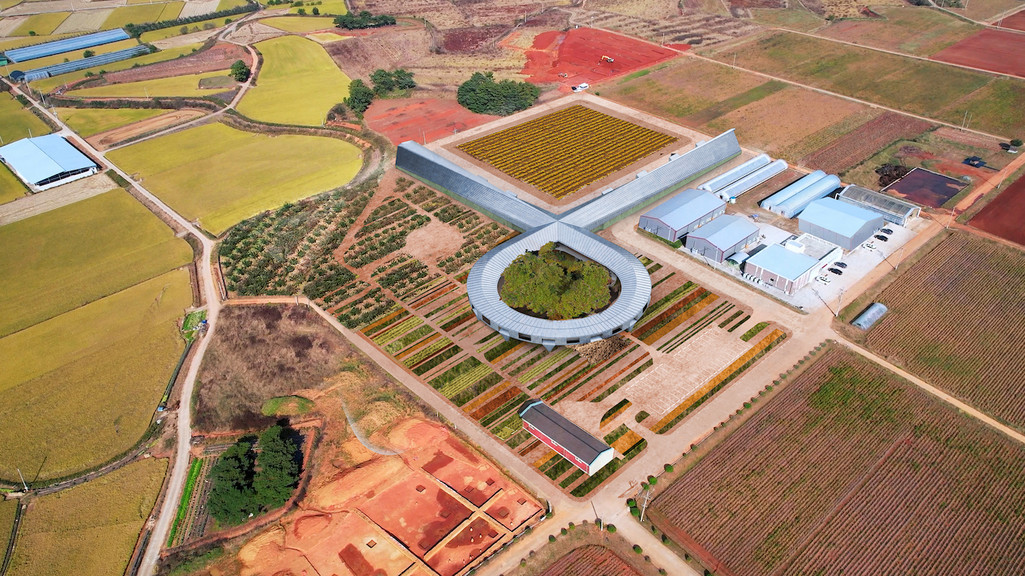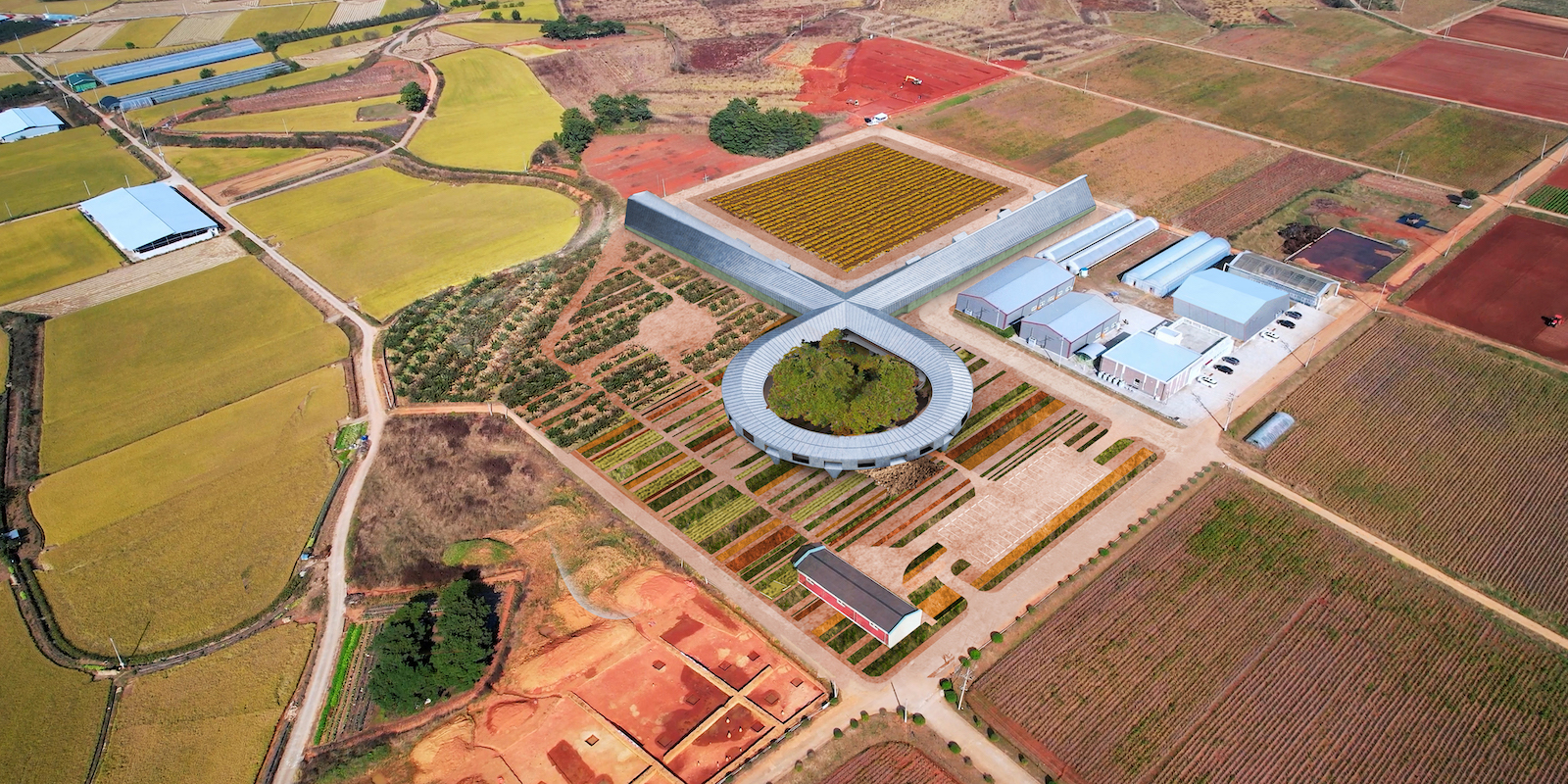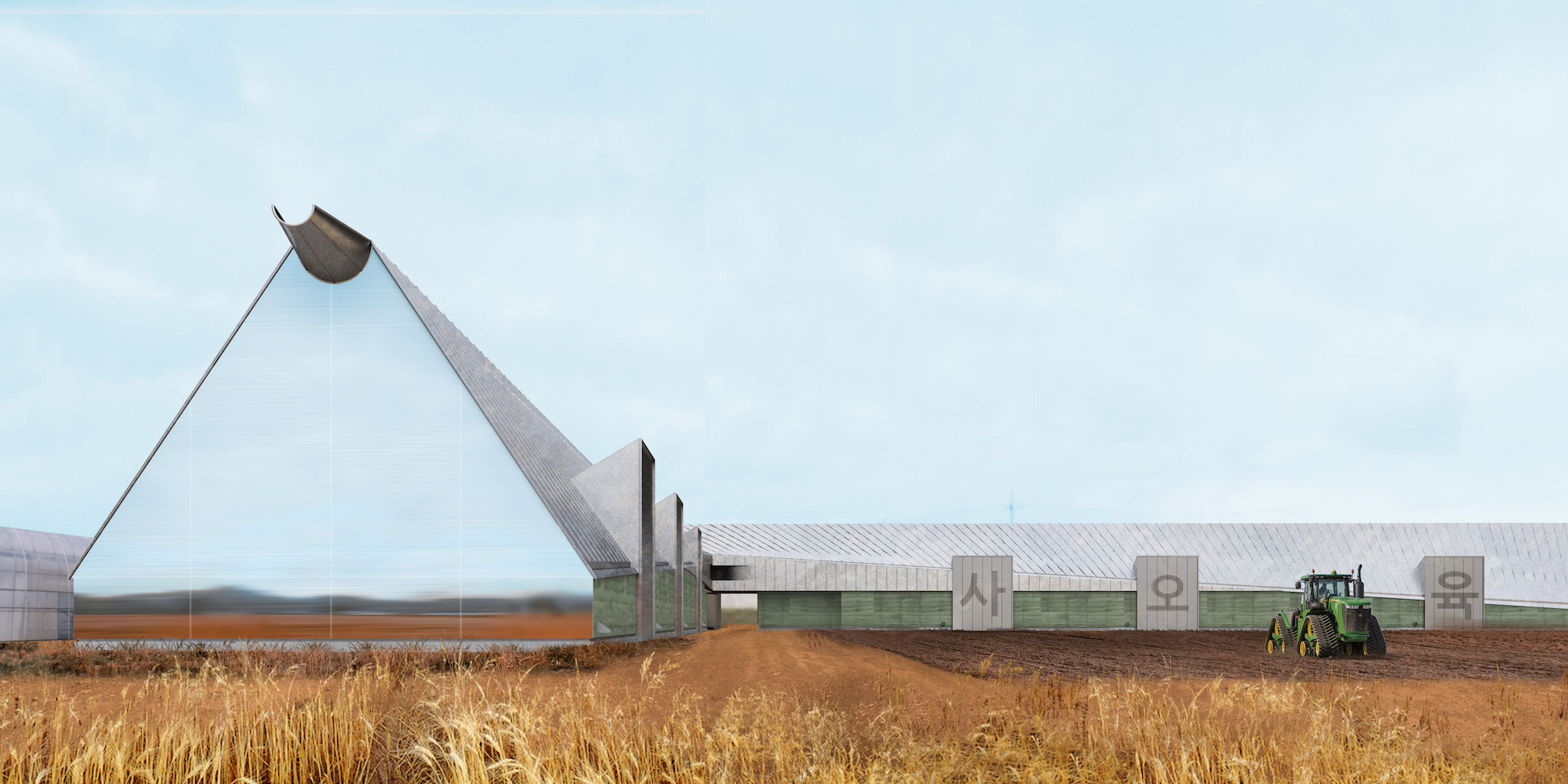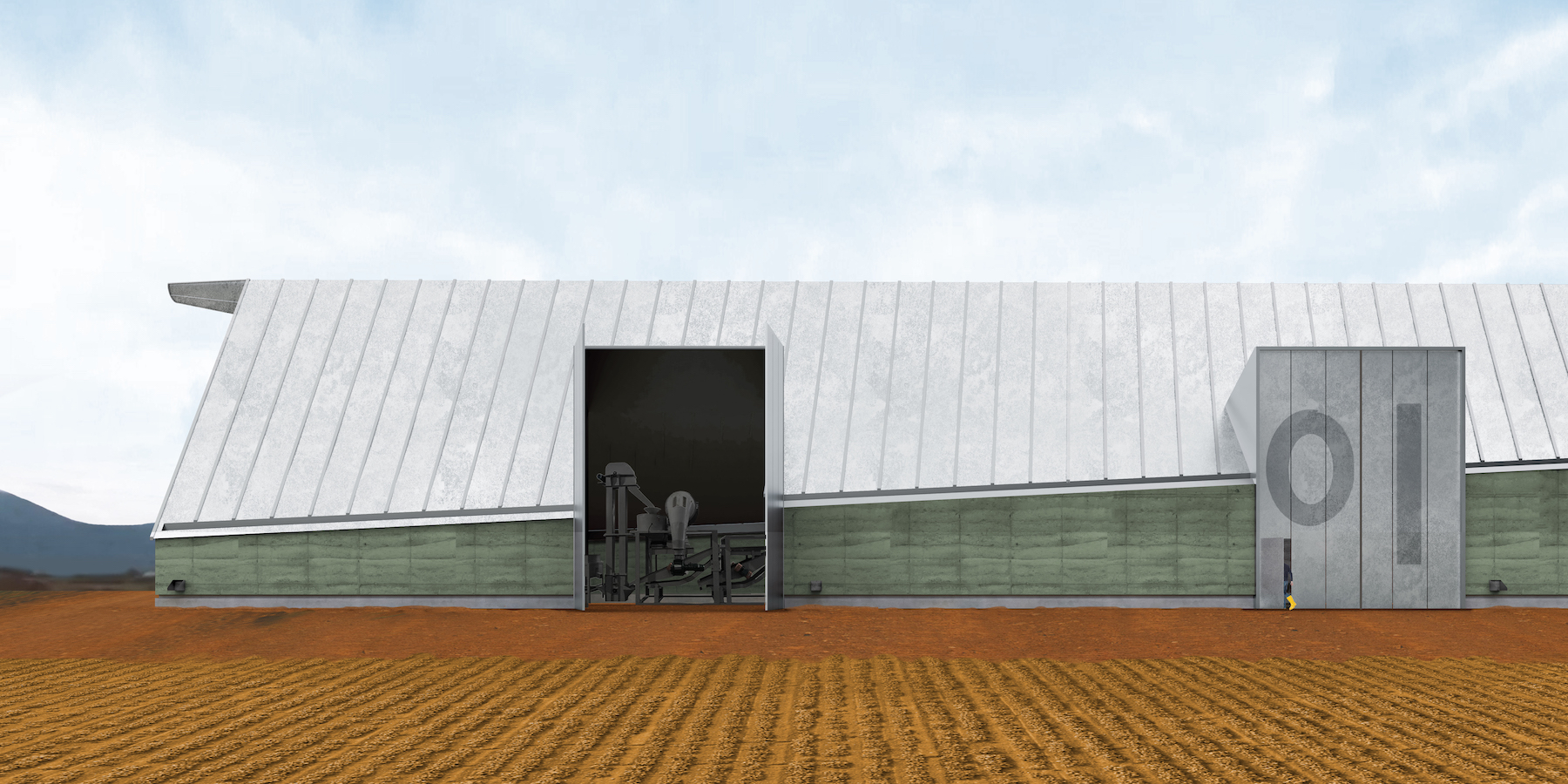
Young & Ayata win First Prize in international competition for Agricultural Resources Management Institute in South Korea
Oct 25, 2022
Young & Ayata, co-directed by UCLA AUD’s Kutan Ayata, has received First Prize in the International Competition for the (New) Agricultural Resources Management Institute in Gyeongsangbuk-do, South Korea. Organized by the Korean Institute of Architects, the competition opened in late 2021, seeking creative designs for a new building that would integrate the Agricultural Resource Management Institute’s main office and one of its branches as the Institute relocates.
The project is sited in rural South Korea and follows the relocation of a variety of provincial offices and other government institutions over the past decade. The competition asked entrants to develop facilities and spaces to store and produce products, stoke advanced agricultural science and research, and establish a new, future-oriented Agricultural Resource Management Institute.
Ayata founded Young & Ayata alongside architect Michael Young in 2008 in New York. Their First Prize win grants the practice the Certificate of Award and the priority negotiation rights for the design development and construction document of the Institute. Young & Ayata is currently building the project team with Korean partners in order to undertake the project contract and behind work in early December.
Entitled “The Ring and the Wings,” Young & Ayata’s proposal divides the site into four quadrants. Each quadrant is acknowledged by two long, pitched-roof buildings that form wings, housing crops and other storage facilities and allowing operational access for agricultural vehicles and machines, while framing the site’s northeast quadrant. The two wings meet at the center of the site, which at the ground level creates visual and circulatory movement connecting the four quadrants. Directly above this crossing, on a second level, is the Institute’s operational hub, where programs dedicated to the agricultural workers, managers, and researchers meet; a ring of worker’s housing floats above this site, framing an entry courtyard and tree grove.

The building’s materials are simple and straightforward, Ayata and Young observe. The primary wall construction is rammed earth, and the roof is a galvanized standing-seam sheet metal structurally supported by lightweight steel trusses–durable materials that can be easily maintained, are resistant to deterioration, and are appropriate within the landscape. The only other material used is stainless steel, which panels the elevations of the two agricultural wings to support oversized roof scuppers. These elevations also visually reflect the landscape’s shifting natural light and evoke an iconic image.

As the architects observe, “The Ring and the Wings” is an architecture that “strives to create a place that both binds us in a contract for better land stewardship” while fostering research into the everchanging relationships between humans and natural environments.
“In both word and deed, civilization recorded as human culture begins with how land is cultivated through agriculture,” write Ayata and Young.
“The development of an institute for agriculture management is thus both a building for the pragmatic mundanity of planting and harvesting crops, and at the same time, a center for the innovative development of knowledge through research, effecting ecosystems and economies," they continue. "It is a building devoted to efficiently working the land, and an architecture that speculates on alternate futures for how we can live with the natural environment through more sustainable long-term practices.
“These questions are at the origin of what it means to attend, to care, for the relationships between land and culture.”


Ayata and Young founded Young & Ayata in New York in 2008. Among other accomplishments, they are the recipients of the 2016 Design Vanguard Award from Architectural Record, and their apartment building DL1310–designed in collaboration with Michan Architecture–received the 2019 Progressive Architecture Award from Architect magazine. The practice is dedicated to both built commissions and experimental research, and views the reality of contemporary building as a provocation for architectural form, material and technology. Both Ayata and Young teach–Ayata at AUD, Young at the Cooper Union–and view the educational experience as crucial to the continual development of architectural ideas.
Related Faculty |
Kutan Ayata |